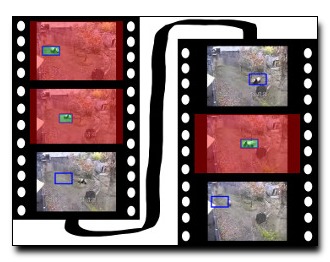
We address the problem of long-term object tracking,
where the object may become occluded or leave-the-view.
In this setting, we show that an accurate appearance model
is considerably more effective than a strong motion model.
We develop simple but effective algorithms that alternate
between tracking and learning a good appearance model
given a track. We show that it is crucial to learn from the
“right” frames, and use the formalism of self-paced curriculum
learning to automatically select such frames. We
leverage techniques from object detection for learning accurate
appearance-based templates, demonstrating the importance
of using a large negative training set (typically
not used for tracking). We describe both an offline algorithm
(that processes frames in batch) and a linear-time online
(i.e. causal) algorithm that approaches real-time performance.
Our models significantly outperform prior art,
reducing the average error on benchmark videos by a factor
of 4.
Download: pdf
Text Reference
James Steven Supan\vc i\vc and Deva Ramanan.
Self-paced learning for long-term tracking.
In
Computer Vision and Pattern Recognition (CVPR), 2013 IEEE Conference on, 2379–2386. IEEE, 2013.
BibTeX Reference
@inproceedings{SupancicR_CVPR_2013,
author = "Supan{\vc}i{\vc}, James Steven and Ramanan, Deva",
title = "Self-paced learning for long-term tracking",
booktitle = "Computer Vision and Pattern Recognition (CVPR), 2013 IEEE Conference on",
pages = "2379--2386",
year = "2013",
organization = "IEEE"
}
